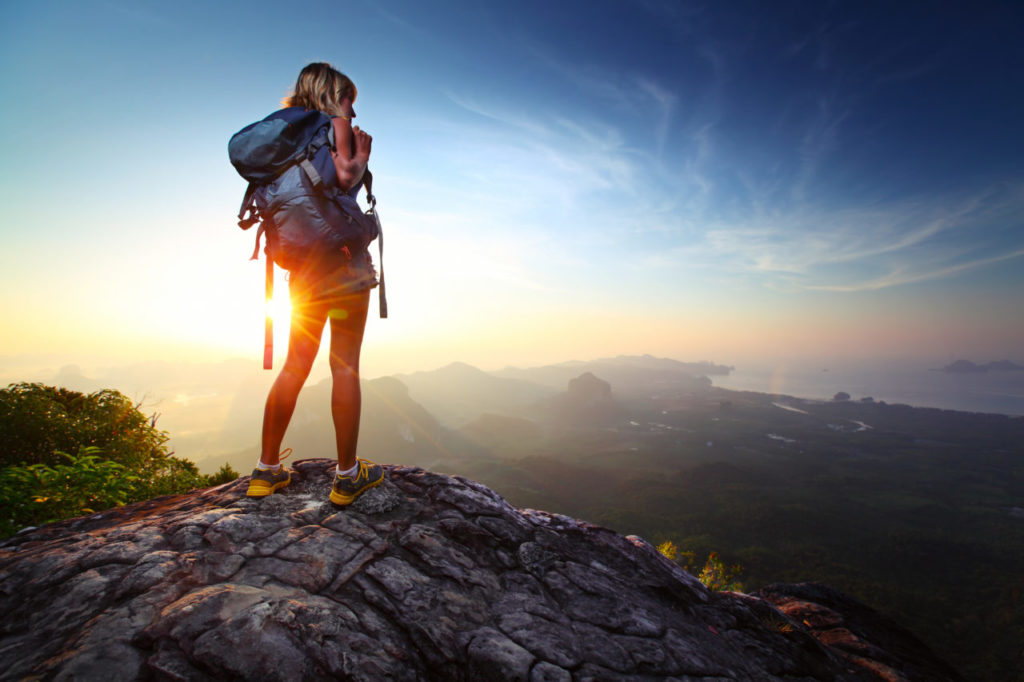Hippocrates is credited with saying “walking is the best medicine.” It’s ancient advice that holds true today. And as Juan B. Rodriguez, DO, will tell you, there’s no better path to good health than hitting the trails of Colorado.
As a family physician at Kaiser Permanente Spring Creek Medical Offices, Dr. Rodriguez recommends hiking as a way for his patients to get the 2.5 hours of moderate intensity exercise they need each week.
“There’s such a wide range of options in our area. Whether you’re out and about in NOCO in our open spaces or taking on trails around Horsetooth, it’s important to make sure you’re healthy enough to take on the challenge,” Dr. Rodriguez says.
Before you embark on an outdoor adventure, consider these tips.

1. Avoid injury by training in the off-season. Colorado weather allows for outdoor activity year-round. But if the weather is bad, you can get a great workout at the gym that will build your stamina. “Try the treadmill or elliptical—anything that has a motion of going up,” says Dr. Rodriguez. “I like the elliptical because you use your arms and it mimics the motion of hiking with trekking poles.” In terms of strength training, focus on building strength, not bulk. “Generally, the lighter you are, the better. You don’t want to carry too much weight up those hills.”

What’s Your Intensity? Moderate exercise, as Dr. Rodriguez recommends, is great for your heart. How can you be sure you’re in the zone? “Moderate intensity means your heart rate zone is between 50-70 percent of max heart rate; this perceived exertion can be tested with the Talk Test. In moderate intensity, you should be able to speak in only one or two full sentences and in high intensity exercise, you are able speak in syllables in between heavy breathing.”

2. Dress for the occasion. Find boots that provide good ankle support and traction, which can help you avoid common hiking injuries. Other things to consider? Protecting yourself from insects and sun with long pants and sleeves plus a wide-brimmed hat to protect your ears and nose. “Colorado weather changes quickly, so dress in layers and consider lightweight rain gear,” says Dr. Rodriguez.

3. Stay energized. Food and water are essentials. How much depends on how long you’ll be gone and your level of intensity. “If you’ll be hiking for a couple of hours, usually a bottle or two of water is enough,” says Dr. Rodriguez. “For most day hikes, think in terms of dense, carb-loaded foods that will boost your energy, like trail mix, nuts, granola or energy bars. Don’t bring anything that will spoil, like deli slices or cheese.”

What Goes In Should Come Out. Dr. Rodriguez says if you’re drinking enough water while hiking, you’ll need to urinate. “It is normal for you to urinate after drinking adequate amount of water and if you’ve done so it should be clear, that tells me you’re staying hydrated.” Watch for signs of dehydration, which include concentrated urine, dry mouth and lips—that “cotton-mouth” kind of feeling. “If you get lightheaded when standing, you’re probably dehydrated and need to load up on fluids.”

4. Keep it light. There’s a fine line between being prepared and bringing too much gear. “When I go backpacking, I bring a little of everything in small amounts, repackaged so it doesn’t weigh me down,” he says. “I also think in terms of things that are multipurpose, like duct tape. If you’re on a longer hike around a natural water source, bring a filtration device or water treatment drops so you don’t have to carry a lot of heavy water.”

5. Protect your skin. “When you go up in altitude, your skin is more exposed, so sunscreen is a necessary. Bring a small container so you can reapply as needed. Long-sleeves and hats also help, and remember to protect yourself from bugs as well. Use an insect repellent with DEET, which is well-tolerated in adults and can be sprayed on clothes and not directly on your skin.”

6. Take a buddy. It’s always a good idea to hike with a friend, particularly when you’re going deep into the woods where there may not be cell service. “If you get injured, having someone who can help you prevent further damage or can go for help is key,” he says. “If you go alone, you need to be even more prepared. Let people know when you’re going and when you expect to return.” Include your location and possibly even GPS coordinates, which could help with search and rescue.

7. Prepare for the worst. Injuries happen while hiking. A first-aid kit is a must. “You can buy first-aid kits online that have a little of everything, but keep in mind those can get heavy. I always bring soap, tape and gauze. Clean any wounds, and get creative: little pieces of duct tape can be used to hold wounds closed.” Dr. Rodriguez also recommends thinking creatively should a more serious injury, such as a broken bone, occur. “You can prevent further damage by making a splint from hiking poles or even branches, which can be attached by rope or even clothing that you’ve torn into strips.”.

8. Look out for hidden danger. Rattlesnakes love the Colorado sun as much as we do. So, it’s important to be on the lookout. Dr. Rodriguez says prevention is key. “Stay on the trail and out of the tall grass,” he says. “If you come across a snake, back up and let others know so they can avoid it.” Treating a Rattlesnake Bite. Folklore says that if you’re bit by a rattler, you should suck out the venom. But is this true? “Definitely not,” says Dr. Rodriguez. “Sit still, call for help, and wait for help to arrive.”

9. Talk to the doc. Before hiking, people with health conditions should speak to their doctor. Post-hike, stay on the lookout for injuries or conditions that might require an office visit. “You’ll know it if you step in poison ivy—it’s pretty intense. Also, if you drank water that wasn’t filtered enough and now have gastrointestinal issues, you might need antibiotics. Serious cases of dehydration may also require a visit to a doctor.”

9. Talk to the doc. Before hiking, people with health conditions should speak to their doctor. Post-hike, stay on the lookout for injuries or conditions that might require an office visit. “You’ll know it if you step in poison ivy—it’s pretty intense. Also, if you drank water that wasn’t filtered enough and now have gastrointestinal issues, you might need antibiotics. Serious cases of dehydration may also require a visit to a doctor.”

There’s No Such Thing as an “Easy” Fourteener
If you plan to hike a fourteener this summer, Dr. Rodriguez recommends building your stamina on easier trails. “Start slow and work your way up in terms of distance,” he says. “Advance your intensity levels, take on a few more hills, go a little farther, go up a little higher.” And make sure you fully understand the dangers of hiking above treeline and the rules of the mountain, which you can find at www.14ers.com/safety.






